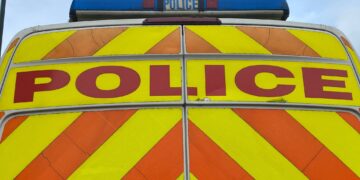In this week’s article, vet Michael Morrow looks at dealing with lumps and bumps in veterinary practice.
Here at St Vincents Vets we deal with owners concerned about lumps or masses on their pets on a daily basis, looking for advice and reassurance and I thought it may be useful to give an overview of our approach to dealing with these cases.
One of my old text books has a quote ‘A lump is just a lump until you biopsy it.’ This may appear an oversimplification at first reading, but it is a pivotal point in all of our discussions of lumps that have been found on a pet. Fast or slow-growing, large or small, ulcerated or just a nodule under the skin we cannot be definitive about the prognosis without an accurate diagnosis.
The simple words tumour and cancer are extremely emotive. We all know this, unfortunately often from personal experience. But it is very important that we differentiate between a malignant tumour or cancer, and a benign one.
At first presentation and clinical examination there are some lumps that as veterinary surgeons we can be almost certain are benign. For example, so-called skin tags, lipomas (fatty lumps) and warts. But it is imperative to get a pathologist opinion on almost all lumps to determine the likely diagnosis and best way to proceed.
We send samples to our lab on a daily basis for histopathology – where microscopic examination by qualified pathologists gives our clinicians the information they need to give you, the owners, the best advice on how to proceed. And I remind you – ‘A lump is just a lump until you biopsy it’. But so then, what is a biopsy?
There are several ways to biopsy a mass or lump, and there are pros and cons to each.
The least aggressive technique is a fine needle aspirate, where we aspirate cells from the mass with a syringe and needle and make smears for examination at the laboratory. We can often do this without sedation or anaesthesia, and it is a very useful technique to use when planning surgery.
However, in certain cases the number or types of cells aspirated lead to an inconclusive report meaning we have to look at other options. An alternative is a wedge biopsy which requires anaesthesia, as we need to cut a wedge out of the mass and close the wound with sutures. This technique often yields more reliable information about the mass than a fine needle aspirate but does require anaesthesia. In both these approaches the information from the biopsy is used to plan appropriate surgery or consider a prognosis and how to proceed with the case.
In some cases, we would consider an excisional biopsy, where we simply remove the entire mass under general anaesthetic and submit it for pathology. While this appears to be a simple and effective way to removing the mass and diagnosing it at the same time there are some inherent risks.
One of the reasons for attempting a fine needle or wedge biopsy prior to surgical excision is to determine whether the mass is a benign or malignant tumour before attempting removal. Malignant tumours require wider margins and hence more aggressive surgery. Benign tumours often require less aggressive surgical resection.
Surgical removal of a mass prior to a preliminary diagnosis from biopsy can pose a risk in cases of a malignant tumour.
If you have any concerns about a mass or lump or any other health issues affecting your pet please contact your veterinary practice for advice.

Michael and Nancy Morrow own and run St Vincents Veterinary Surgery, an independent practice offering personal care for all your pets in and around Wokingham. To find out more visit stvincentsvets.co.uk or call the practice on 0118 979 3200 to arrange a visit and meet the team.



















































